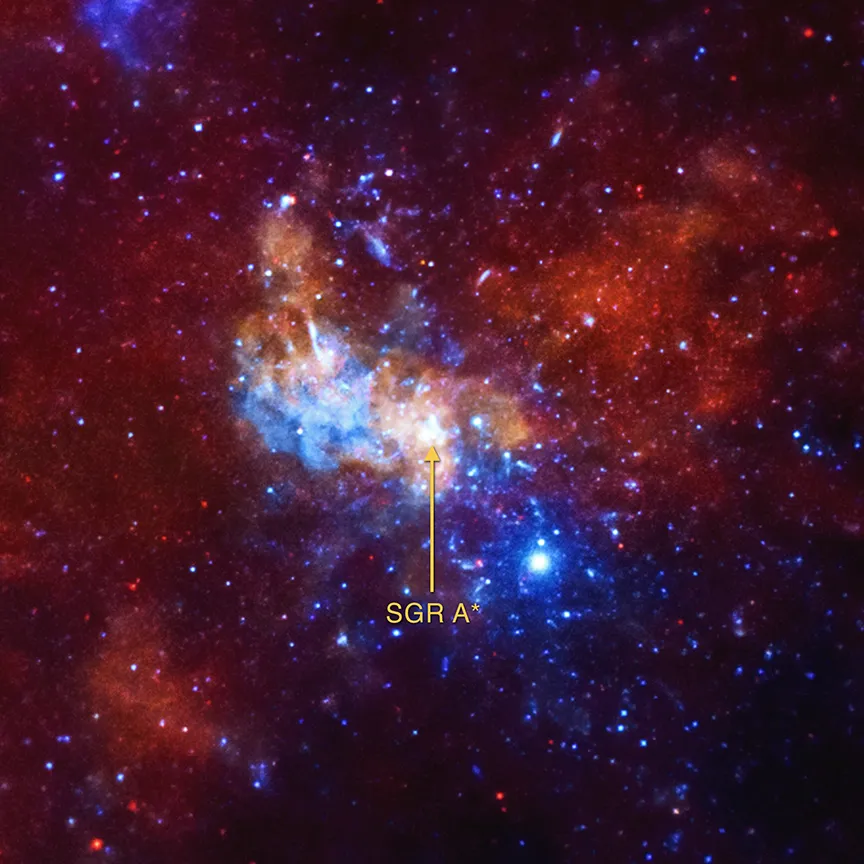Star formation remains something of a mystery in space science and astronomy.
How do small dust grains and diffuse gas form into a main-sequence star like the Sun?
There are many methods astronomers can use to study star-forming regions, but one study looks at spectral data, or ‘molecular fingerprints’, from the Milky Way’s central molecular zone.
More about our Galaxy's black hole

Kai Yang is a postdoctoral researcher at Shanghai Jiao Tong University, China. His research focuses on star formation, protostellar jets and outflows, and astrochemistry.
We spoke to him to find out more about his discovery.

What is the central molecular zone?
The central molecular zone is a region in our Galactic centre where large molecules are gathered at high densities.
It is close to Sagittarius A*, the supermassive black hole at the centre of the Milky Way, and exhibits many extreme physical processes that make it a very interesting region for studying star formation.
For example, there are high-energy phenomena in this region, as well as the remnants of past supernovae.
What did you find in the central molecular zone?
We looked at the star-forming regions in the central molecular zone and found slim filament structures that we were not expecting.
Filaments are found everywhere in our Galaxy, but we found evidence of a special type of them by looking at molecular signatures and evidence of shocks in the central molecular zone.
Shocks transform solid molecules into gases, meaning that we can measure them.
And they’re often found in outflows, where newborn stars are expelling materials. But the filaments we found are away from shocks.

What are filaments and why were these ones so special?
Filamentary structures are very often found in molecular clouds, and transport materials into forming stars, enabling them to grow.
There are controversies regarding what exactly filamentary structures are like in three dimensions.
Some believe that they’re simply a collection of dense regions that happen to be projected together on the plane of the sky, similar to a constellation where its individual stars can be from very different areas of the Universe.
The filaments we found differ from other molecular filaments in our Galaxy because they don’t show emission from dust, which is formed of small particles instead of gas molecules.
This is the first time we’ve seen structures like this that don’t arise from dust, so they’re very different from what we’ve seen previously.

How might these structures have formed?
When a filament is associated with dust, it’s in an equilibrium state – the pressures inside and outside the filament are the same.
In the filaments we found, the pressure inside the filament is much higher than outside. This means that they might dissipate or disappear.
This tells us that there is some sort of material life cycle in the central molecular zone.
For example, initially there would be dust, but then a shock comes and destroys the dust, releasing the molecules into a gas phase and forming filaments.
These filaments may then dissipate, leaving molecules spread widely across the central molecular zone before they eventually cool back down into dust again.
We think this might be the process that’s driving the ‘tornado’ shape of these structures.

What’s so interesting about these filaments?
Because this region is so close to our nearest black hole, its environment is very different to other star-forming regions.
By understanding the clouds in these very extreme conditions, we can better understand the processes going on in our Galactic centre.
How did you gather the data to make this discovery?
The data is a result of observations from the Atacama Large-Millimeter Array (ALMA) taken by scientists at Shanghai Astronomical Observatory and their international colleagues.
One of the molecules we’re very interested in, as it results from these shock phenomena, is silicon monoxide (SiO).
Our paper looks at one molecular signature from SiO, but further ALMA measurements could tell us more about the filaments we observe and whether the material cycle we have proposed is true or not.
This interview appeared in the July 2025 issue of BBC Sky at Night Magazine

